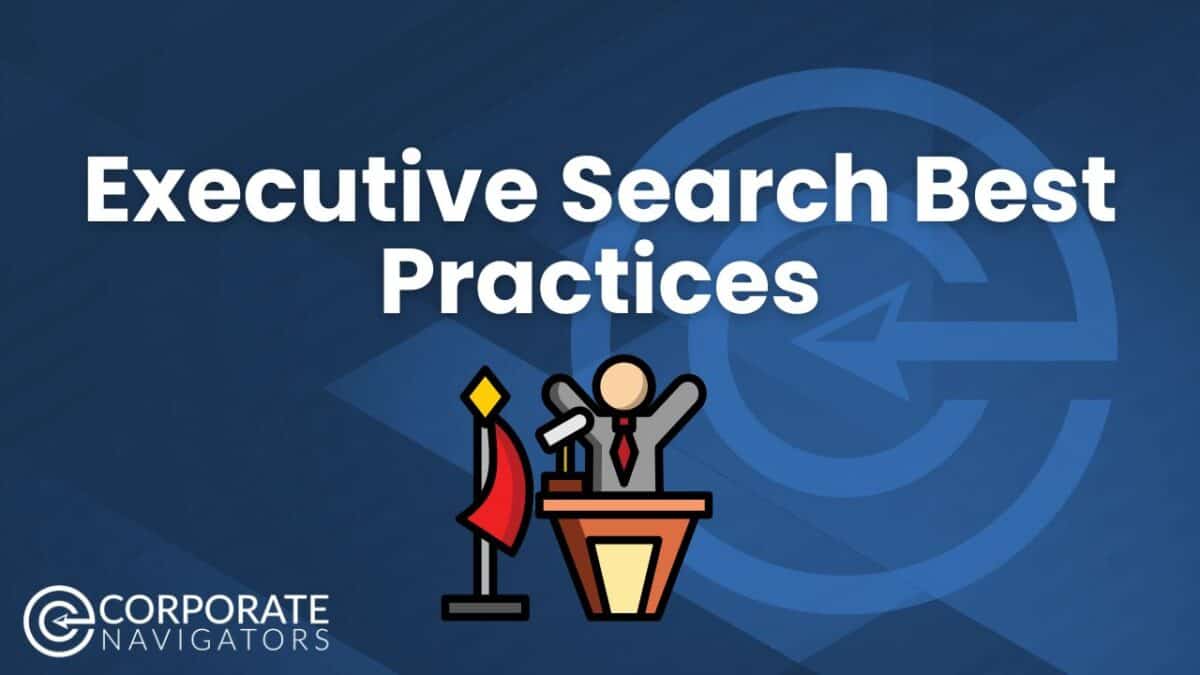
Table of Contents: Executive Search Best Practices
Executive Search Best Practices
When you need to identify qualified candidates for future roles, employing the expertise of an executive search firm is a reliable route. To fully understand the value of this service, it’s important to understand the best practices of these firms and how they maximize value for their clients.
The most effective executive search processes rely on a blend of strategy, communication, rigorous assessment, and a deep understanding of leadership needs. Implementing a few core best practices can significantly improve the likelihood of finding and securing outstanding executive talent.
What is Executive Search?
Executive search, often referred to as headhunting, is a specialized recruitment service used by organizations to identify and attract highly qualified candidates for senior-level and executive positions, such as CEO, CFO, or Vice President roles. Typically, executive search involves engaging an external firm that takes a proactive approach, researching and reaching out to candidates who may already hold leadership roles and are not actively seeking new positions.
The process is comprehensive, involving an understanding of the client organization’s needs, market mapping, rigorous candidate assessment, and confidential outreach to ensure the individuals chosen possess the right skill set, experience, and cultural fit. Unlike traditional recruitment, executive search is tailored, discreet, and highly focused on filling top-tier roles vital to an organization’s success.
Executive Search Best Practices
So what steps does an executive search firm take to identify the ideal candidates for an open role? Long story short, it all starts with a conversation to fully understand the client’s needs. Then, everything falls into place from there.
1. Define the Role and Align Stakeholders
A successful search begins with a clear, detailed job profile—not just a description of duties, but a vision for the impact the executive will make. Early meetings with key decision-makers lay the groundwork, set expectations, and establish consensus on required skills and leadership qualities to avoid misalignment later in the process.
2. Leverage Storytelling and Networking
Attracting top executives requires articulating the strategic significance of the role; using a storytelling approach makes positions stand out and resonates with leaders seeking purpose and influence. Expanding beyond traditional job boards, effective search involves tapping industry-specific networks, specialized groups, and referrals—many top candidates are found through direct connections or at industry events, not public postings.
3. Engage Passive Talent with Discretion
Most outstanding executives are not actively job hunting. Approaching passive candidates calls for thoughtful, personalized communication and an understanding of their aspirations. Discretion, respect for confidentiality, and aligning the organization’s opportunity with executive goals are crucial.
4. Use Multi-Channel and Digital Tools
Blend traditional search with modern digital channels to access the broadest pool of talent. This includes leveraging LinkedIn, executive-only platforms, alumni networks, and even AI-enabled sourcing and screening tools to identify and assess the best prospects.
5. Rigorously Assess for Cultural Fit and Leadership Ability
Assessment goes far beyond the resume. Use in-depth interviews, behavioral questions, and personality assessments to evaluate leadership style, cultural alignment, and communication skills. Consider incorporating leadership shadowing or trial engagements to ensure candidates fit the unique culture and challenges of the organization.
6. Foster Inclusion and Reduce Bias
A modern search process widens the talent pool by ensuring accessibility and inclusion throughout. Use inclusive language in postings, accommodate diverse candidate needs, and train recruiters to spot and correct unconscious bias during evaluation.
7. Maintain Communication and Transparency
Keep all stakeholders updated at each stage with clear, data-backed progress reports. Open channels for feedback and discussion help address divergent opinions and build trust, leading to faster, better-aligned decisions.
Implementing Best Practices of Executive Search
Implementing these best practices ensures a more strategic, comprehensive, and successful executive search—identifying not only the most qualified but also the best-suited leaders for long-term organizational success. Do you need to identify c-level talent? Then our executive search services may be right for you.


